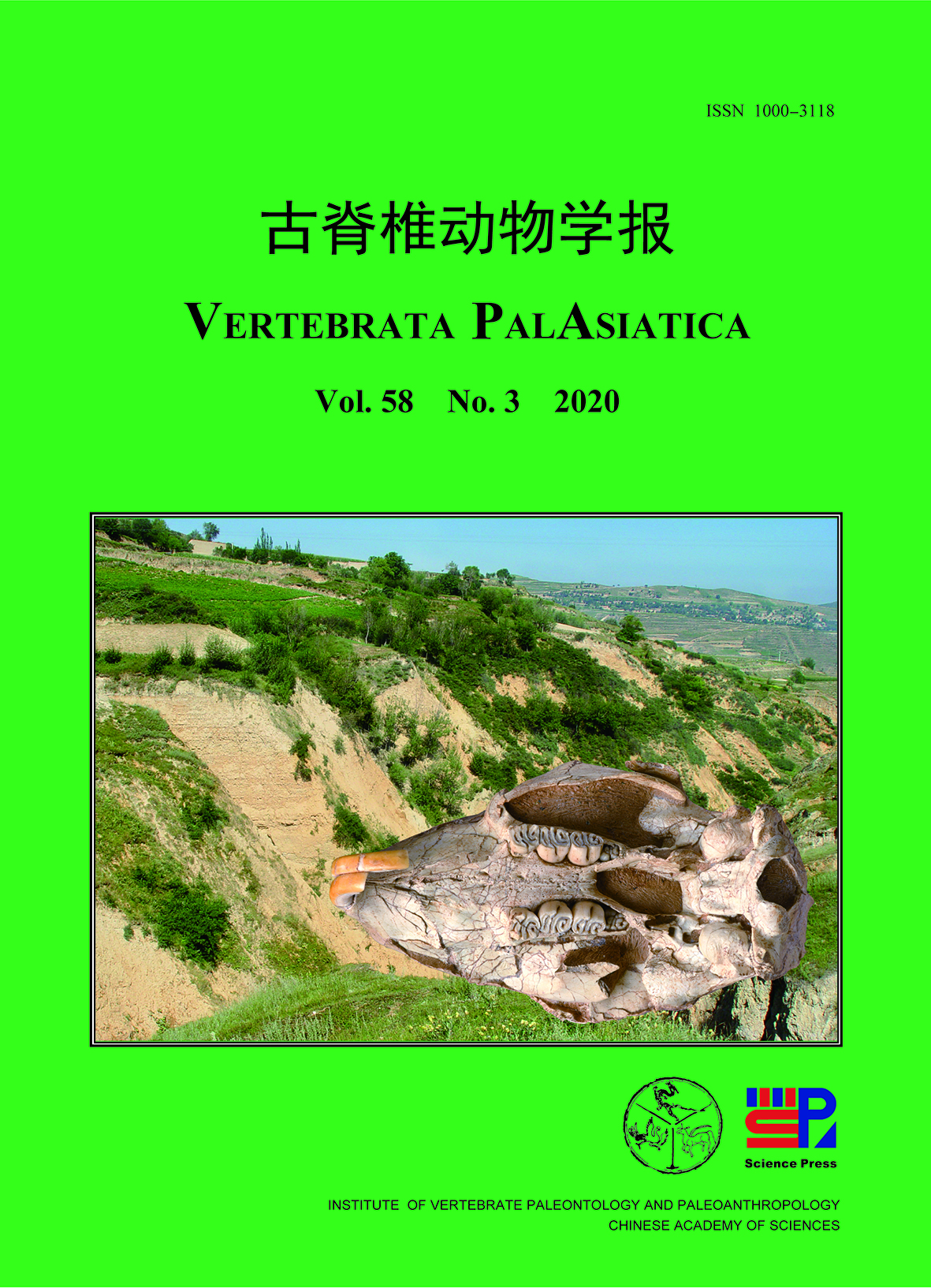

封面说明:豪猪是欧、亚、非大陆从晚中新世到现在最大的啮齿动物之一,其最大者体长达0.7 m。豪猪化石过去主要发现于欧洲的新近纪?第四纪地层和亚洲的第四纪地层。最近,在我国甘肃临夏盆地的新近纪地层中发现了4个较完好的豪猪头骨化石,其中有两个头骨还一起保存有完好的下颌骨。这是目前世界上已知保存最好的豪猪化石。这些化石代表豪猪一新种,因其头骨较宽扁,吻部和鼻骨相对较短等特点,被称为短吻豪猪(Hystrix brevirostra sp. nov.)。封面图上所显示的是一件短吻豪猪头骨化石的腹面及其产地之一——甘肃临夏盆地广河县庄禾集乡对康地点的早上新世何王家组地层。详见王伴月、邱占祥文。
Cover image: Hystrix is one of the Old World largest rodents ranging from Late Miocene to recent. The largest individual of Hystrix is about 0.7 m in length. Hystrix fossils have been recorded mostly from European Neogene?Quaternay and Asian Quaternary. Recently, four well preserved Hystrix skulls (two with mandibles) were collected from Neogene deposits in Linxia Basin of Gansu Province. This is the best Neogene material of Hystrix so far known from Eurasia. These fossils represent a new species: Hystrix brevirostra, characterized by having a relatively short rostrum and nasal. The Cover image shows the occlusal view of one of the skulls and one of the localities yielding Hystrix brevirostra—Early Pliocene Hewangjia Formation of Duikang, Zhuangkeji Village, Guanghe County, Linxia Basin, Gansu Province. See details in the paper of Wang & Qiu.